Blog Posts Tagged Ray Optics Module

Lidar for Autonomous Vehicles and Vacuum Cleaners
In the future, will self-driving cars be commonplace? Explore how ray tracing can be used to study the technology that enables them to be aware of their surroundings.
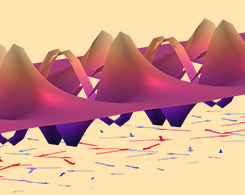
Modeling Surface Plasmon Polaritons in COMSOL®
Due to their potential applications in nanoscale manipulation of light, surface plasmon polaritons (SPPs) are of great research interest. Learn how to model them here.
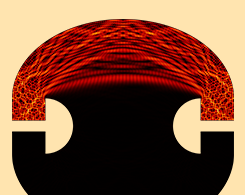
Investigating the Penrose Unilluminable Room with Ray Optics
Is the Penrose unilluminable room really unilluminable? We investigate this question using the Ray Optics and Wave Optics modules…

Happy Birthday, Joseph Petzval
In 1840, this Hungarian physicist introduced a lens design that could gather more than 20 times as much light as lenses used in earlier cameras.
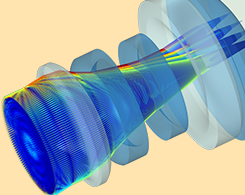
Zooming in on a Compact Camera Module Design with Simulation
Lights, camera, simulation: Read about factors that help define the performance of compact camera modules (CCMs) as well as how optical ray tracing can be used to analyze their design.
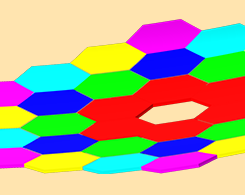
The Quest for Clarity: Tracing Rays in 3 Telescope Designs
The Keck telescope includes a parabolic reflective surface made up of 36 separate interlocking mirrors. Learn more about this and 2 other popular telescope designs via ray tracing simulation.
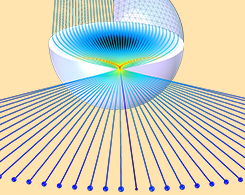
2 Video Discussions on Multiphysics Simulation of Optics and Photonics
John Wallace, senior editor at Laser Focus World, and Chris Boucher, technical product manager at COMSOL, discuss the use of multiphysics simulation in the optics R&D community. Take a look…

Computational Electromagnetics Modeling: Which Module to Use?
If you work with a particular electromagnetic device or application area, you might be wondering which module in the COMSOL product suite is right for you. Keep reading for a comprehensive intro.
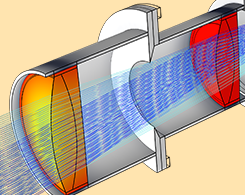
Zeiss, Abbe, and the Evolution of Microscopes and Optical Research
The story of Carl Zeiss and Ernst Abbe involves a picturesque town in Germany, compound microscopes, and a hammer and anvil. See for yourself with a glimpse into the history of optical research.
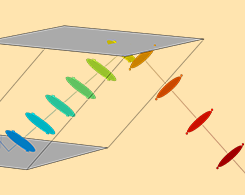
Studying the Polarization of Light with a Fresnel Rhomb Simulation
A Fresnel rhomb is a simple optical system for studying light polarization. Follow along as we simulate linearly, elliptically, and circularly polarized incident light in a Fresnel rhomb.

How to Perform a STOP Analysis with COMSOL Multiphysics®
Interested in structural-thermal-optical performance (STOP) analysis? We go over the theory, background, and how to perform such an analysis in the Ray Optics Module.

Studying Presbyopia with an Optomechanical Model of the Human Eye
You have to see this multiphysics simulation research: To help combat the effects of presbyopia in aging eyes, Kejako built a 3D optomechanical model of a full human eye.
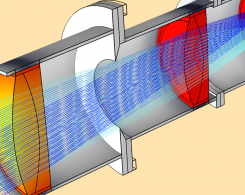
How to Create Complex Lens Geometries for Ray Optics Simulations
Learn how to set up the model geometry for a complex lens system in a way that ensures an effective and successful ray optics simulation.
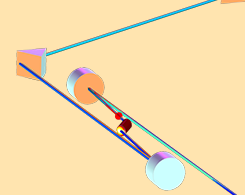
Ray Optics Simulation of Sagnac Interferometers and Ring Laser Gyros
Have you ever been in a revolving restaurant that slowly spins as you dine? This same concept can be used to understand the operating principles of Sagnac interferometers and ring laser gyros.
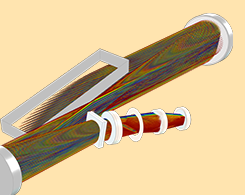
Analyzing White Pupil Échelle Spectrographs via Ray Tracing Simulation
Astronomers use échelle spectrographs to detect far-away planets. To design a white pupil échelle spectrograph with optimized sensitivity, engineers can turn to ray tracing software.

Improving IFE Target Fabrication with a Droplet Microfluidics Method
A common joke is that fusion energy is 30 years away, and always will be. Researchers are using simulation to tackle the challenges involved with of inertial fusion energy target production.

How to Analyze Laser Cavity Stability with Multiphysics Ray Tracing
If you’re looking for an in-depth example of multiphysics ray tracing, then check out this blog post about analyzing and predicting laser cavity stability in the COMSOL® software.
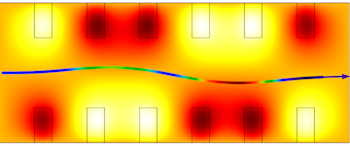
How Does the Choice of Ray-Tracing Algorithm Affect the Solution?
When performing a high-frequency optics simulation, do you use a sequential, nonsequential, or exact ray tracing algorithm? Learn how to choose to make the most of your solution.
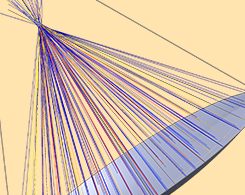
Efficiently Optimizing Solar Dish Receiver Designs
By building a simulation application of a solar dish receiver, you can efficiently test different geometries for the dish cavity to determine the optimized shape for your design.
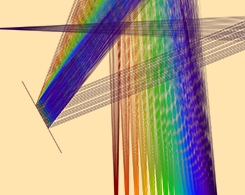
How to Use the New Ray Termination Feature for Geometrical Optics
You can simplify your optical simulations performed with the Ray Optics Module — including model setup and results analysis — with the Ray Termination feature. Read about how to use it here.
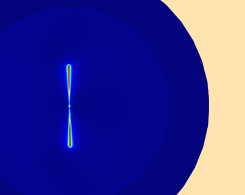
How to Couple a Full-Wave Simulation to a Ray-Tracing Simulation
Learn how to couple full-wave and ray-tracing simulations in a model with a nonhomogenous domain around the antenna. Part 4 of a series on multiscale modeling in high-frequency electromagnetics.
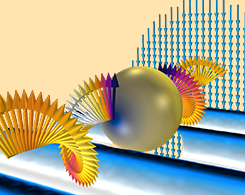
How to Couple Radiating and Receiving Antennas in Your Simulations
Learn how to couple radiating and receiving antennas in your simulations by using the scattered field formulation. Part 3 of a series on multiscale modeling in high-frequency electromagnetics.
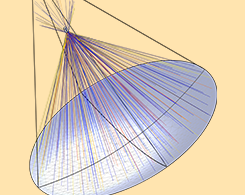
How to Model Solar Concentrators with the Ray Optics Module
Learn how to predict the concentration ratio for an idealized, parabolic solar reflector using Monte Carlo ray tracing in the Ray Optics Module, an add-on to COMSOL Multiphysics®.
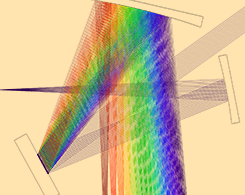
Using the New Ray Tracing Algorithm in COMSOL Multiphysics® 5.2a
The ability to trace rays in unmeshed domains, and even release and trace rays outside a geometry, has been available in the Ray Optics Module as of COMSOL Multiphysics® version 5.2a. Learn more.
